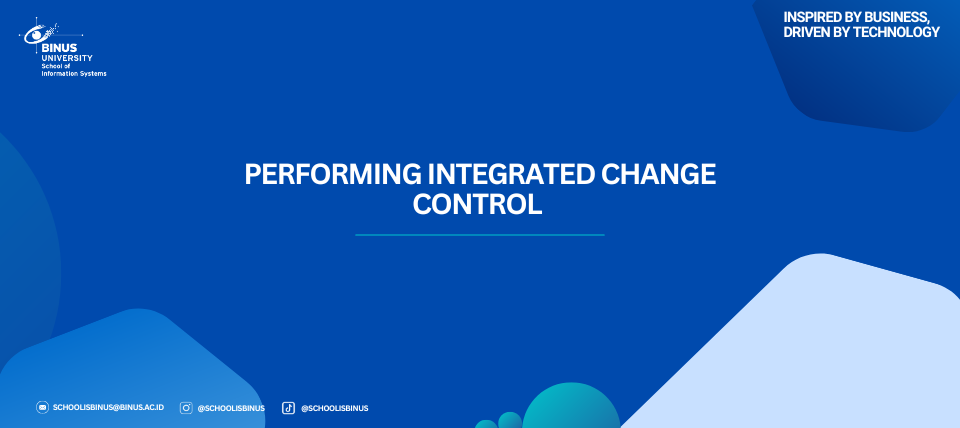Performing Integrated Change Control

Performing integrated change control is a critical process in project management that involves identifying, evaluating, and managing changes throughout the project life cycle. This process ensures that any changes to the project scope, schedule, or costs are carefully considered and documented, minimizing disruptions and maintaining project alignment with its objectives.
Change Control on IT Projects
Change control is particularly important in IT projects due to the dynamic nature of technology and the frequent changes in requirements. Key aspects of change control in IT projects include:
- Frequent Change Requests: IT projects often encounter numerous change requests due to evolving technology, user feedback, and changing business needs. Project managers must be prepared to handle these requests systematically.
- Impact Assessment: Each change request must be evaluated for its potential impact on the project’s scope, schedule, and budget. For instance, a request to add new features may require additional resources and time, which must be assessed before approval.
- Formal Review Process: Significant changes should undergo a formal review process involving key stakeholders, including project sponsors and team members. This ensures that all perspectives are considered before making decisions.
- Documentation: It is essential to document all change requests, approvals, and modifications to the project management plan. This documentation helps maintain clarity and accountability throughout the project.
Change Control System
A change control system is a structured approach to managing changes in a project. It typically includes the following components:
- Change Request Process: This outlines how change requests are submitted, reviewed, and approved. It may involve specific forms or templates to standardize submissions.
- Evaluation Criteria: The system should define criteria for evaluating change requests, including their impact on project objectives, resources, and timelines.
- Approval Workflow: A clear workflow for approving changes is essential. This may involve different levels of approval depending on the significance of the change.
- Communication Plan: Effective communication is vital for change control. The system should include a plan for informing stakeholders about changes, their implications, and any adjustments to the project plan.
- Tracking and Reporting: The change control system should include mechanisms for tracking changes and reporting on their status. This helps ensure transparency and accountability throughout the project.
Importance of a Change Control System
Implementing a robust change control system is crucial for several reasons:
- Minimizing Disruptions: A well-defined change control process helps minimize disruptions to the project by ensuring that changes are carefully evaluated and managed.
- Maintaining Project Alignment: By systematically managing changes, project managers can ensure that the project remains aligned with its goals and objectives, even in the face of evolving requirements.
- Enhancing Stakeholder Communication: A change control system facilitates better communication among stakeholders, ensuring that everyone is aware of changes and their implications.
- Improving Project Success Rates: Projects that effectively manage changes are more likely to succeed, as they can adapt to new information and requirements without losing sight of their overall objectives.

